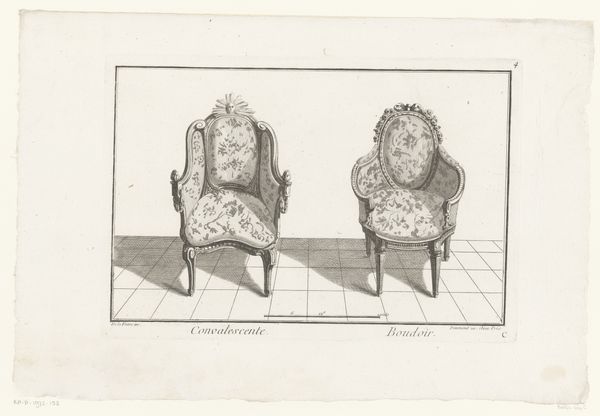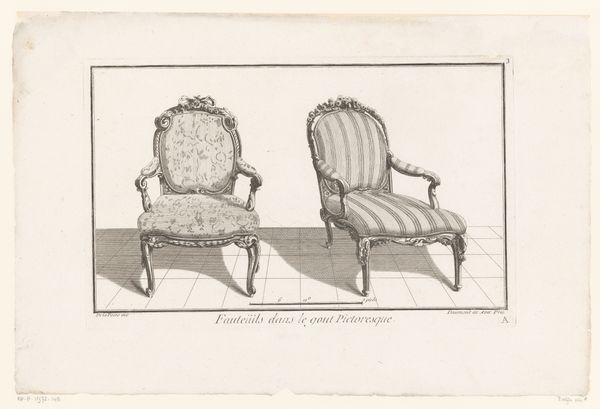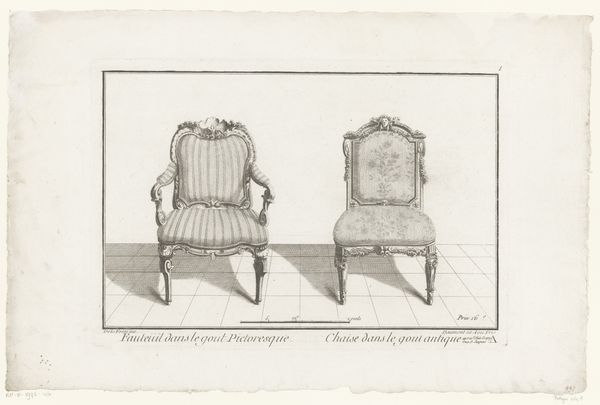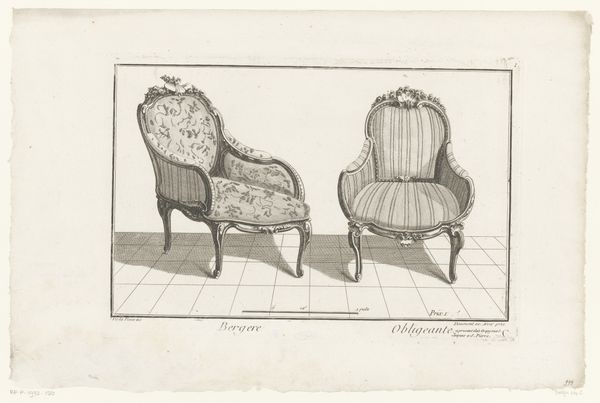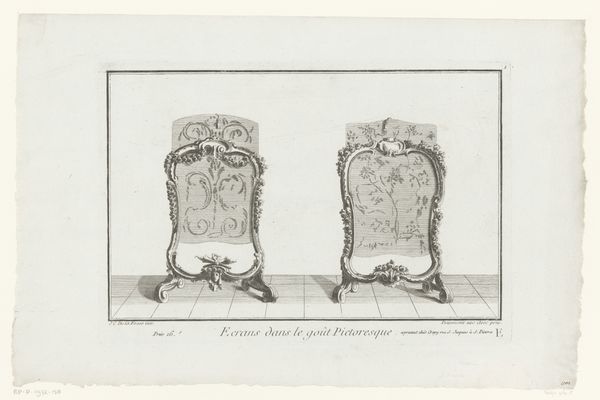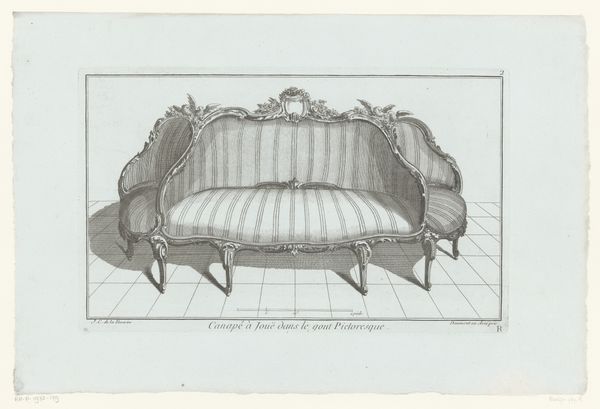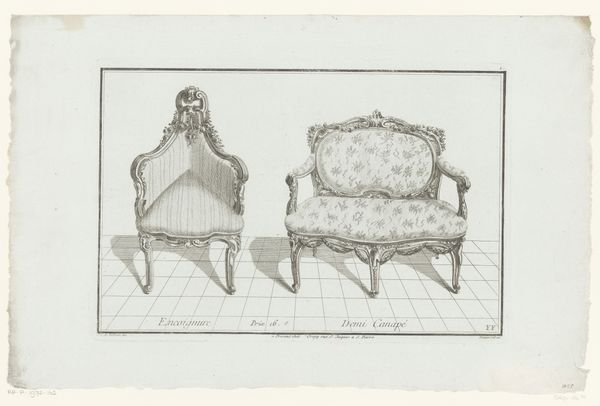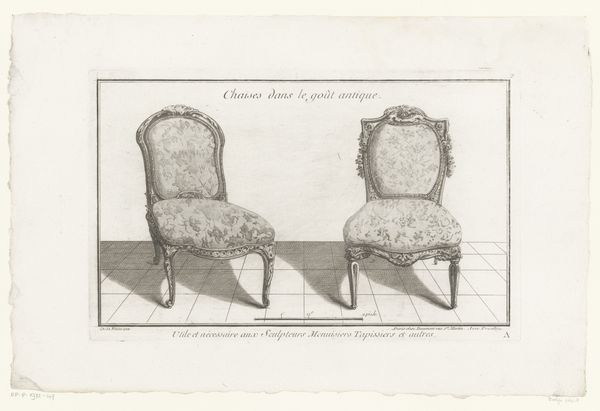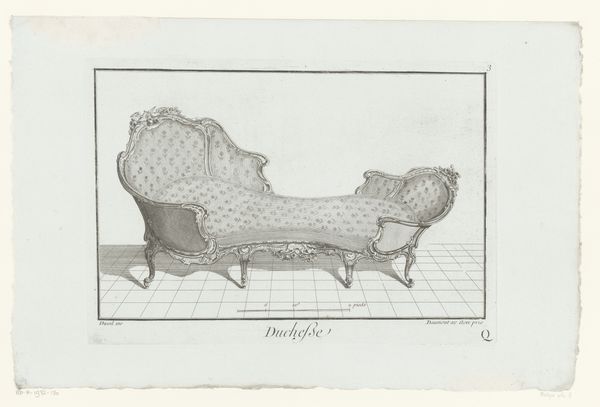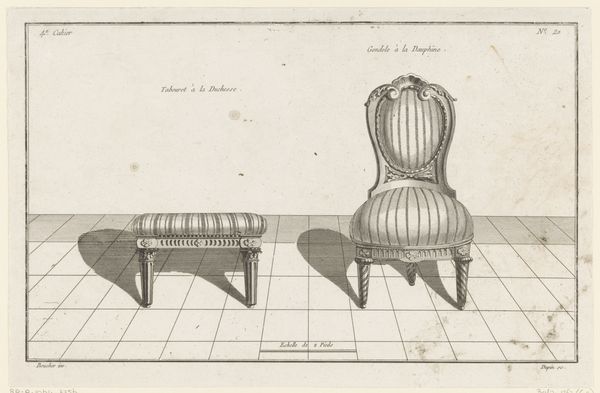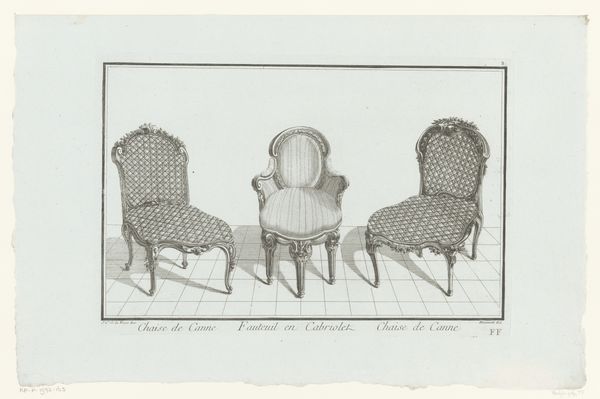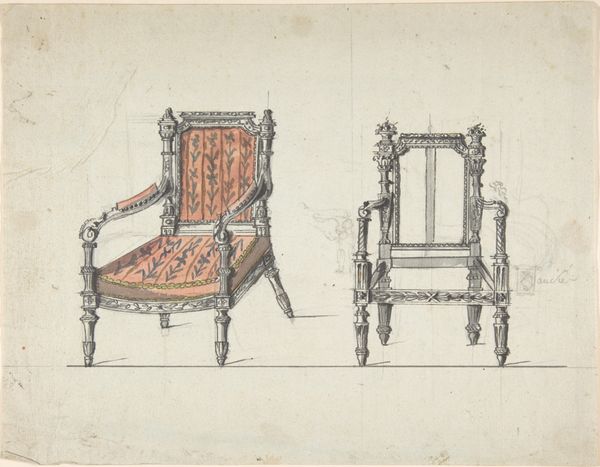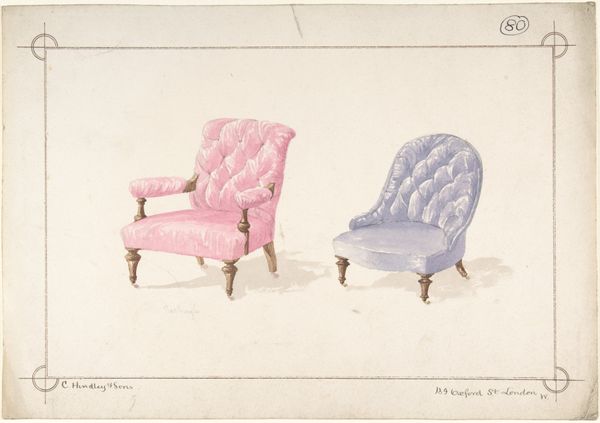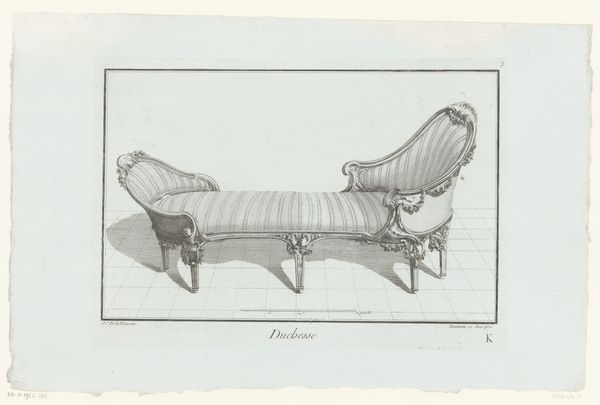
drawing, paper, engraving
#
drawing
#
light pencil work
#
baroque
#
old engraving style
#
paper
#
sketchwork
#
line
#
sketchbook drawing
#
decorative-art
#
engraving
Dimensions: height 229 mm, width 333 mm
Copyright: Rijks Museum: Open Domain
Editor: Here we have an engraving from between 1745 and 1775, currently held at the Rijksmuseum. It's called "Toilet en stoel" - Toilet and Chair – and is attributed to an anonymous artist. It seems so simple, just depictions of furniture, but there is something very precise in this representation. What strikes you most about this engraving? Curator: Well, first off, notice the chairs themselves. One is labeled "Denuë Baignoire," likely intended for disrobing after a bath, and the other "Italienne," or Italian style. Look at how these terms carry cultural weight – bath time becoming a ritual and national identity being projected onto something as everyday as furniture. Editor: So, they aren’t just showing chairs, but representing ideas through them? Curator: Precisely! It’s an era of elaborate social rituals. Think about the symbolism imbued in courtly dress, the minuet, or even landscape paintings designed to reflect the patron's cultivated taste. Aren't these chairs, in their own way, miniature stages for social performance? Editor: I see that now. The decoration and style… They speak of a certain status. So, what does it tell us that the artist chose to depict these particular chairs? Curator: Perhaps a fascination with the accoutrements of the wealthy or, perhaps, a commentary on fleeting trends. Think of how we read meaning into the design of modern technology, reflecting status, aspiration, and even social anxieties. This artist, whether consciously or not, participated in that same tradition. What new understanding do you draw from these thoughts? Editor: I’m left thinking about how objects can become symbols, carrying meanings beyond their practical purpose. And how these meanings evolve and shift over time, reflecting a culture's changing values and priorities. Thanks, that’s given me a lot to think about!
Comments
No comments
Be the first to comment and join the conversation on the ultimate creative platform.
